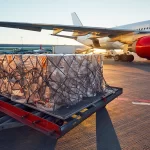- By TOP CHINA FREIGHT
- August 28, 2025
- Sea Freight, Shipping
Understanding shipping time from China to UK by sea is essential to plan inventory, manage costs, and meet customer expectations. This guide covers key routes, average transit times, factors influencing delivery, and tips to improve efficiency.

1.Overview of Sea Freight from China to UK
Sea freight is the most cost-effective option for shipping large volumes of goods from China to the UK. Major ports in China, such as Shanghai, Ningbo, Shenzhen, and Qingdao, connect directly to UK ports including Felixstowe, Southampton, and London Gateway.
Key benefits of sea shipping:
1.Cost-effective for bulk shipments:
Ideal for full container loads (FCL) and large consignments, lowering per-unit costs.
2.Capacity for oversized or heavy cargo
Suitable for machinery, construction materials, or industrial goods that can’t be shipped by air.
3.Reliable and frequent sailings
Multiple carriers provide consistent schedules to UK ports.
4.Flexibility with container options
Choose between FCL, less-than-container-load (LCL), or specialized containers like refrigerated or open-top units.
5.Environmental advantages
Compared to air freight, sea freight produces significantly less carbon emissions per shipment, supporting greener logistics operations.
6.Scalability for growing businesses
Easily adjust shipment volumes based on seasonal demands or market changes.
2.Average Shipping Time from China to UK by Sea
Transit time varies depending on port of origin, destination port, shipping line, and route type.
| Origin Port | UK Destination Port | Transit Time (Days) | Notes |
|---|---|---|---|
| Shanghai | Felixstowe | 28–35 | Direct service preferred |
| Ningbo | Southampton | 30–36 | Slightly longer due to route distance |
| Shenzhen | London Gateway | 32–38 | Includes minor transshipment delays |
| Qingdao | Felixstowe | 33–40 | Often slower during peak season |
Pro Tip: Direct services are generally faster, while transshipment routes may add 5–7 days.
3.Factors Affecting Shipping Time from China to UK by Sea
Busy periods in China or UK ports may delay loading/unloading.
Storms in the South China Sea, Indian Ocean, or North Atlantic can extend transit times.
Frequency of sailings and carrier reliability impact overall delivery time.
Delays in documentation or inspections can add several days.
Standard shipping is slower; express or premium services reduce transit time slightly.
4.Main Shipping Routes from China to UK
5.Tips to Reduce Shipping Time
1.Book Direct Services:
Avoid unnecessary transshipment delays.
2.Plan Around Peak Seasons:
Avoid Q4 or pre-Chinese New Year when port congestion is highest.
3.Use Reliable Freight Forwarders:
They can secure space and navigate customs efficiently.
4.Prepare Documentation in Advance:
Commercial invoices, packing lists, and bills of lading should be ready to prevent clearance delays.
5.Consider Port Choice:
Larger UK ports like Felixstowe have faster handling times compared to smaller ports.
6.Comparing Sea vs. Other Shipping Methods
| Mode | Transit Time | Cost | Best For |
|---|---|---|---|
| Sea Freight | 28–40 days | Low | Bulk shipments, oversized cargo |
| Air Freight | 1–5 days | High | Urgent or high-value goods |
| Rail (via China-Europe rail) | 15–25 days | Medium | Medium-volume shipments to UK and Europe |
7.Case Study: Optimizing Shipping Time
A UK retailer importing furniture from Shanghai faced frequent delays of 5–7 days during peak season. By switching to a direct FCL service with weekly sailings to Felixstowe and coordinating with a local freight forwarder for customs clearance, they:
- Reduced average transit time from 37 to 30 days
- Avoided congestion-related delays
- Improved inventory planning and reduced stockouts
8.Future Trends Affecting Shipping Time from China to UK by Sea
Mega-ships improve economies but may cause port congestion.
Faster documentation processing reduces port delays.
Belt & Road and alternative transshipment hubs may shorten delivery times.
Slow steaming and fuel restrictions may slightly increase transit time but reduce costs.
9.How Cargo Type Affects Transit Time
Different cargo types can influence transit time due to handling requirements:
| Cargo Type | Impact on Shipping Time | Notes |
|---|---|---|
| Standard Goods | Minimal | Most FCL/LCL shipments follow normal schedules |
| Perishable Goods | Moderate | Require refrigerated containers; may prioritize faster sailings |
| Hazardous Goods | Higher | Special permits and handling can add a few days |
| Oversized / Heavy Machinery | Higher | May require special containers (flat rack/open top), extending handling time |
| High-Value Items | Moderate | Insurance checks or security inspections may cause minor delays |
Tip:
Correctly classify and prepare your cargo to avoid unnecessary delays at the port or during loading.
10.Common Challenges and Solutions
| Challenge | Impact | Solution |
|---|---|---|
| Border Delays | Longer transit time | Pre-clear documentation and use experienced brokers |
| Cargo Damage | Increased costs | Secure packaging and reliable carriers |
| Rising Costs | Budget overruns | Negotiate long-term contracts |
| Communication Gaps | Misunderstandings and errors | Partner with forwarders offering dedicated support |
11.Strategies to Shorten Transit Time
1.Direct Port-to-Port Services:
Avoid unnecessary hub transshipments.
2.Plan Shipments in Advance:
Early booking reduces waiting time at Chinese ports.
3.Choose High-Frequency Routes:
Ports with frequent sailings (e.g., Shanghai-Felixstowe) reduce idle time.
4.Use Premium or Express Sea Services:
Some carriers offer faster schedules at slightly higher costs.
5.Coordinate with UK Ports:
Pre-arrange customs clearance and inland delivery to minimize unloading delays.
Conclusion
Understanding shipping time from China to UK by sea is crucial for planning supply chains, managing costs, and meeting customer expectations. By choosing the right ports, shipping lines, and service types, and by planning around peak seasons, businesses can minimize delays and maintain smooth operations.
Need a Shipping Quote?
If you want expert guidance and peace of mind, our team is ready to assist.
TJ China Freight offers tailored solutions to help businesses of all sizes ship more reliably from China.
FAQs
Q1:How long does it usually take for LCL shipments from China to the UK?
LCL shipments generally take 30–40 days, depending on port of origin, transshipment points, and handling at the destination port.
Q2:Do shipping delays affect customs clearance time in the UK?
Yes, delays at Chinese ports or during transit may cascade into longer customs processing. Preparing accurate documentation in advance can reduce clearance delays.
Q3:Can transit time be shortened during peak season?
Yes, by booking direct services, choosing ports with higher frequency, or using premium sea freight options, you can reduce delays even during busy periods.
Q4:Does using a freight forwarder reduce shipping time?
Yes, experienced forwarders can optimize routes, secure priority space, handle paperwork, and coordinate faster customs clearance, all of which can shorten overall transit time.
Q5:Are there alternative sea routes that save time?
Yes, some shipping lines offer alternative transshipment hubs (e.g., Singapore, Rotterdam, Hamburg) that may slightly reduce time or cost depending on the schedule.



